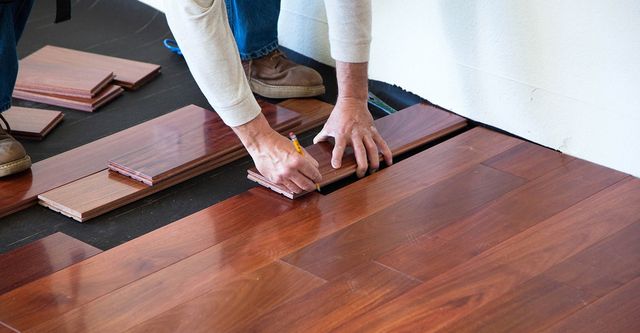Tile flooring has been a popular choice for many homeowners for years. It’s durable, versatile, and comes in a wide range of styles, colors, and patterns. But before you decide to install tile flooring in your home, it’s important to weigh the pros and cons. In this article, we’ll take a closer look at the benefits and drawbacks of tile flooring to help you make an informed decision.
Contents
Pros of Tile Flooring
1. Durability
One of the main advantages of tile flooring is its durability. It’s resistant to scratches, dents, and water damage, making it an ideal choice for high-traffic areas such as entryways, kitchens, and bathrooms. Tile flooring can withstand heavy foot traffic and is less likely to crack or warp compared to other types of flooring.
2. Versatility
Tile flooring comes in a wide range of styles, colors, and patterns. You can choose from ceramic, porcelain, or natural stone tiles, each with their own unique properties. From classic subway tiles to intricate mosaic designs, you can find a tile that suits your personal taste and complements the overall style of your home.

3. Low Maintenance
Tile flooring is relatively easy to maintain. Simply sweep or vacuum regularly to remove dirt and debris, and mop with a mild detergent to keep the tiles clean. Unlike carpet or hardwood flooring, tiles don’t require special treatments or expensive cleaning products to maintain their appearance.
4. Health Benefits
Tile flooring is a good choice for people who suffer from allergies. It doesn’t trap dust, dirt, or allergens, making it a healthier option for indoor air quality. Additionally, tile flooring doesn’t emit harmful volatile organic compounds (VOCs) like some types of flooring do.
5. Temperature Control
Tile flooring is great at keeping your home cool in warm weather. It can absorb and release heat slowly, which makes it a good choice for warmer climates. You can also install radiant heating systems underneath tile flooring to keep your home warm and cozy during the colder months.
Cons of Tile Flooring
1. Hardness
Tile flooring is hard and can be uncomfortable to stand on for long periods of time. This can be a problem for people who spend a lot of time in the kitchen or standing at a desk. While you can use rugs or anti-fatigue mats to cushion your feet, they can be a tripping hazard and may not be practical in all situations.
2. Slippery When Wet
Tile flooring can be slippery when wet, which can be dangerous, especially in bathrooms or kitchens. You can add a non-slip coating to the tiles or use slip-resistant mats to reduce the risk of falls, but it’s important to take extra precautions to avoid accidents.
3. Installation
Tile flooring installation can be time-consuming and labor-intensive. It requires specialized tools and skills to ensure that the tiles are installed correctly and evenly. You’ll also need to properly prepare the subfloor to ensure a smooth and level surface for the tiles.
4. Cost
Tile flooring can be more expensive than other types of flooring, especially if you opt for natural stone tiles. The cost of installation can also be higher due to the specialized tools and labor required. However, it’s important to note that tile flooring is a long-term investment that can add value to your home.
5. Stains and Grout
Tile flooring is prone to stains and grout can be difficult to keep clean. Dirt and grime can accumulate in the grout lines, which can be unsightly and difficult to remove. You can use a grout sealer to protect the grout and prevent stains, but you’ll need to maintain it regularly to keep it looking its best.



